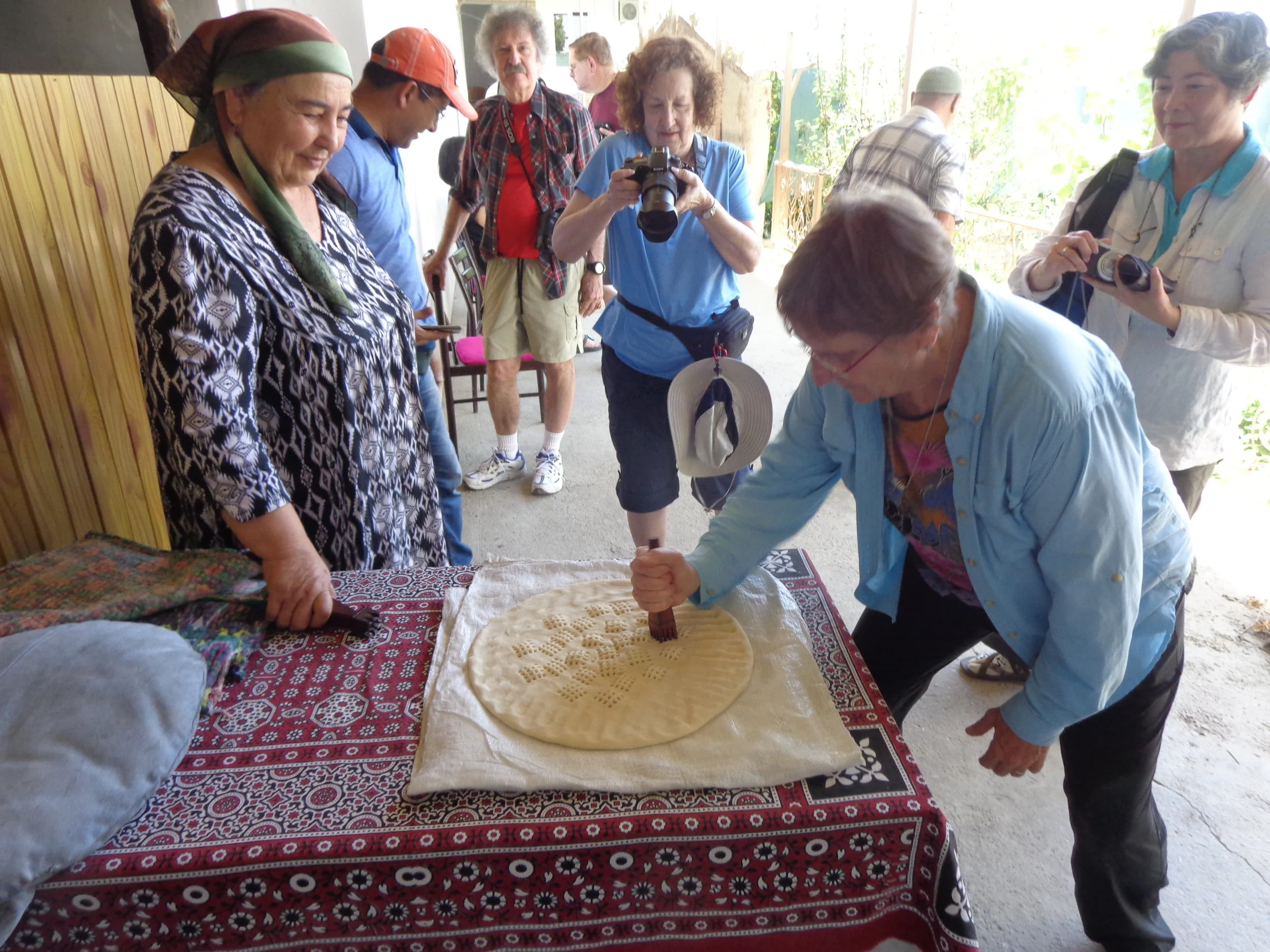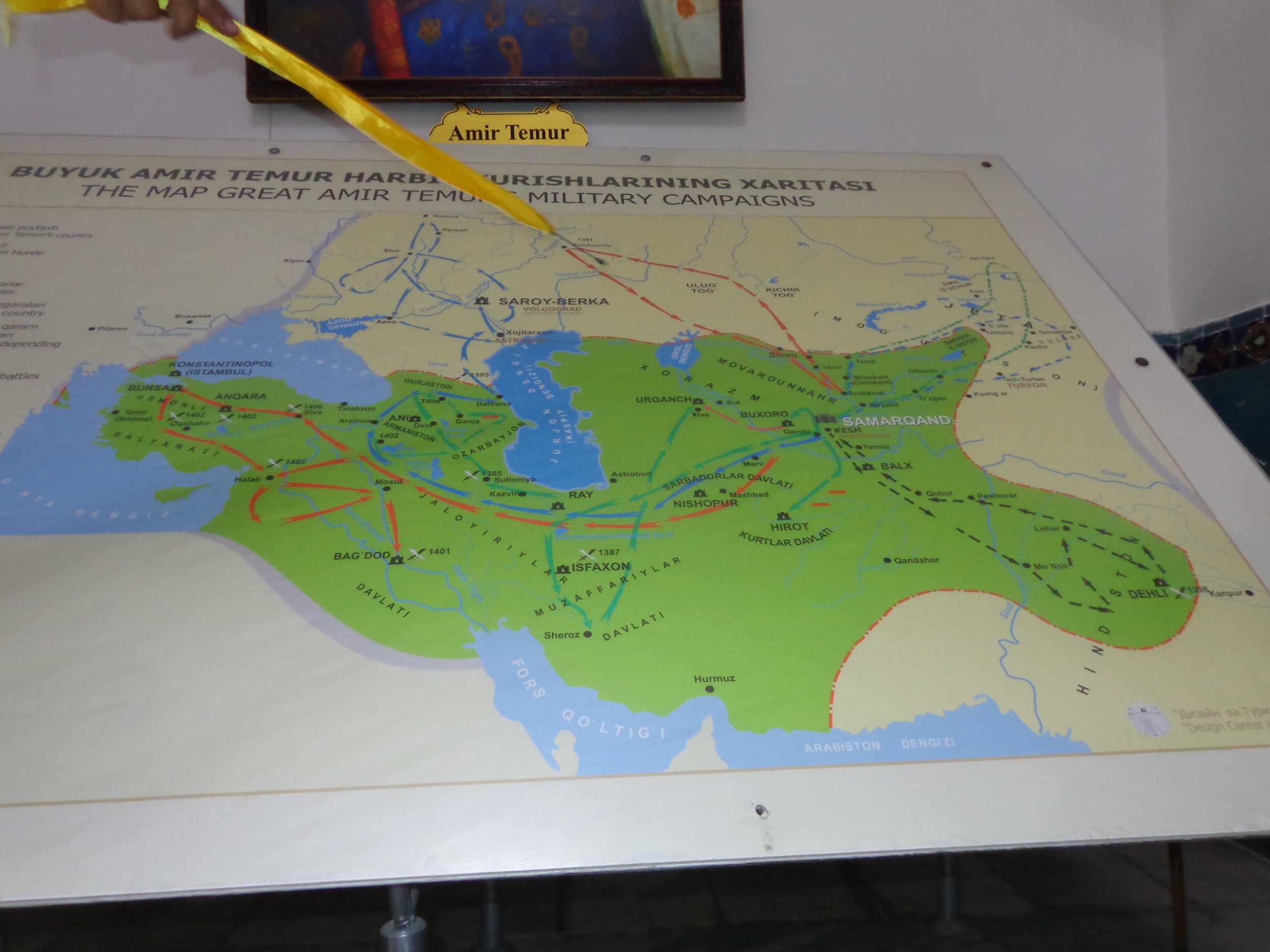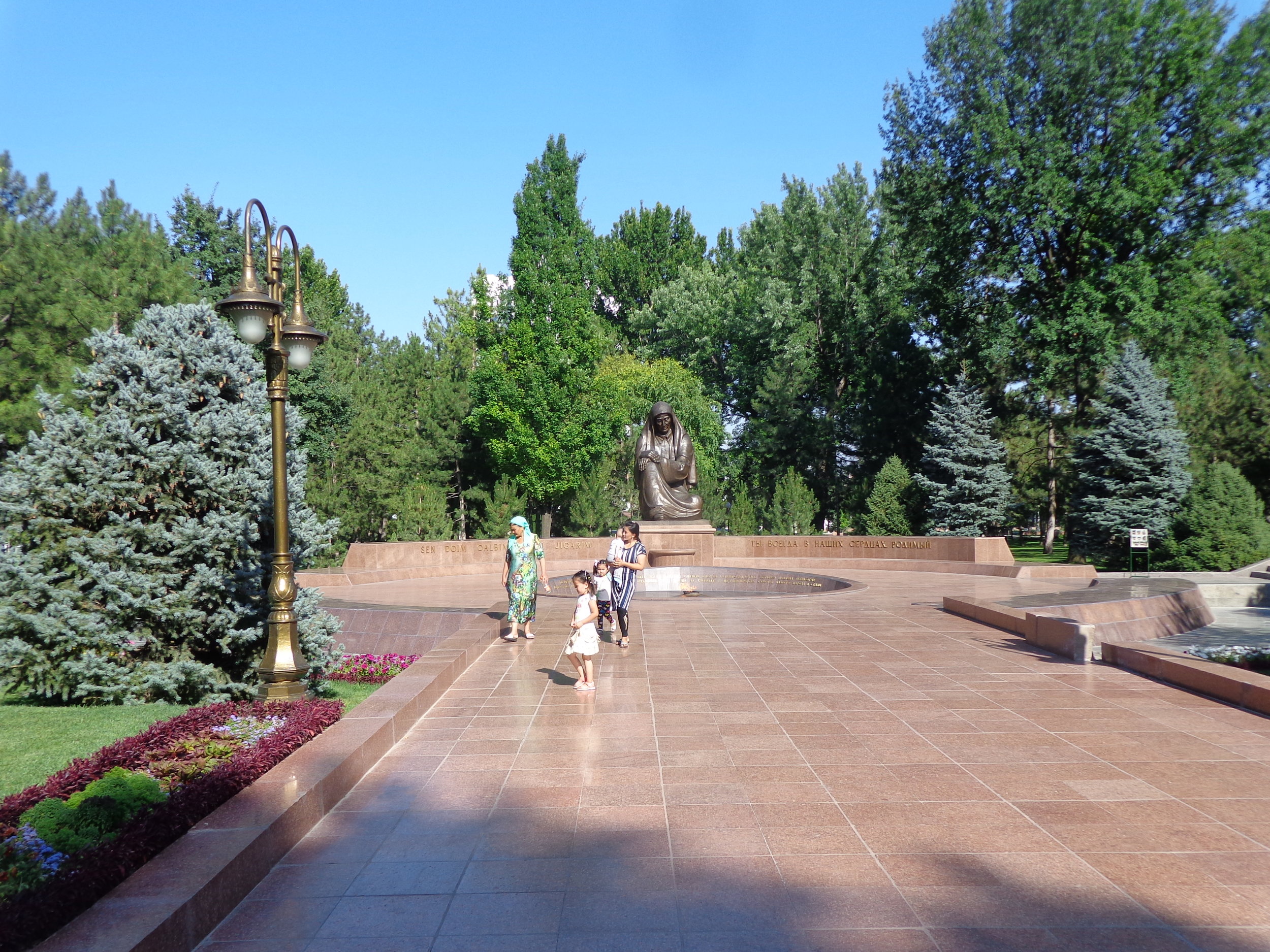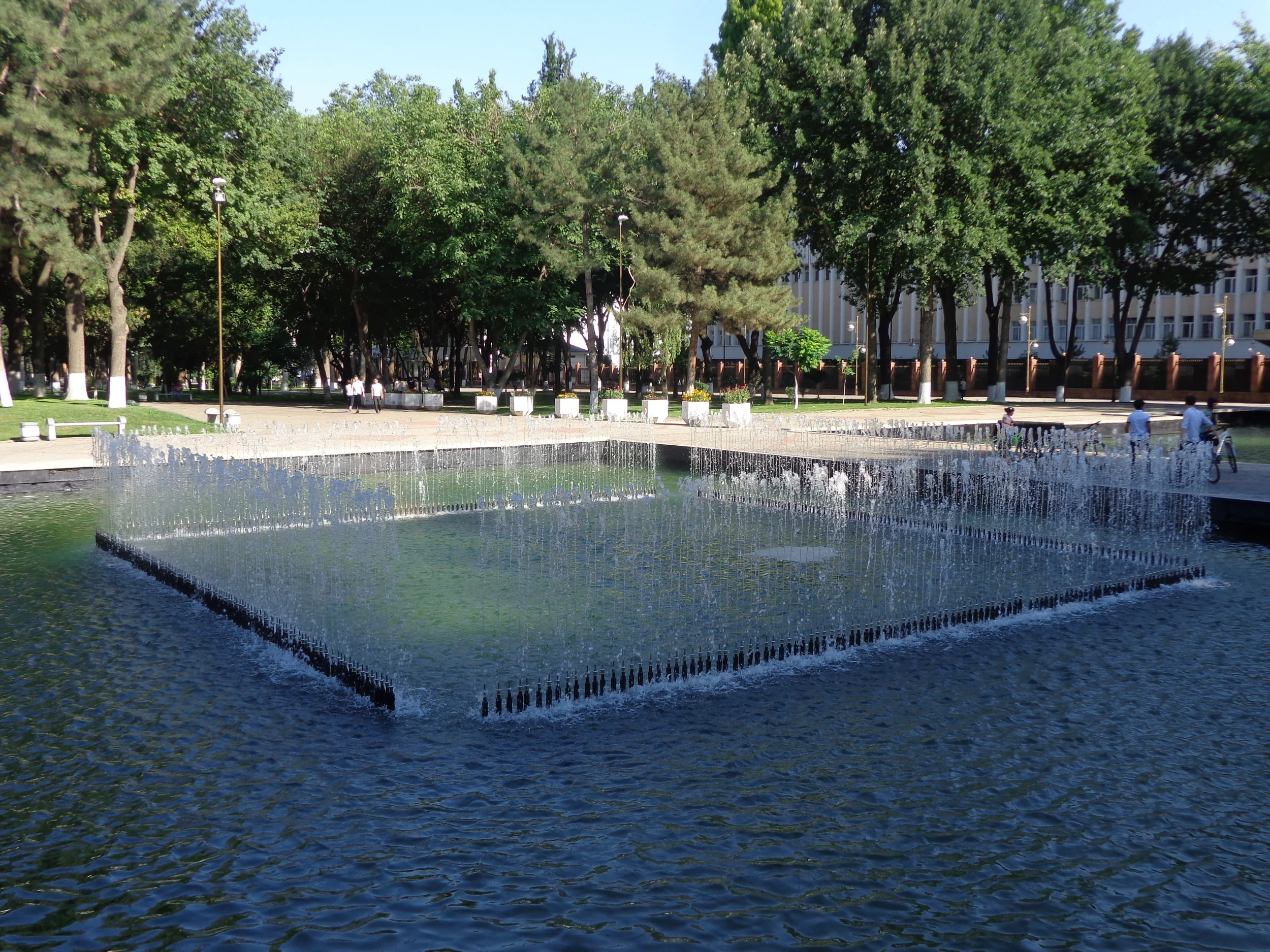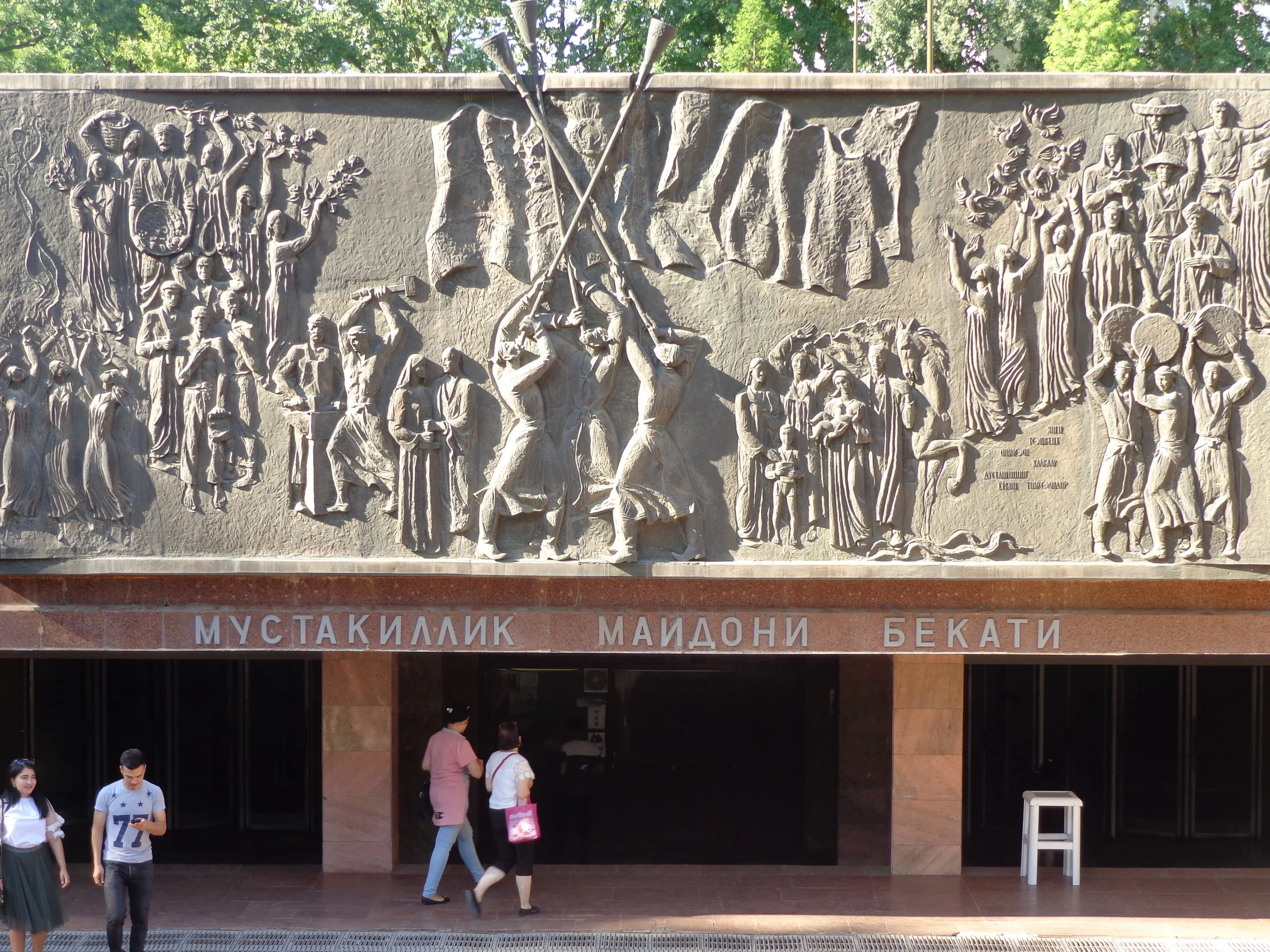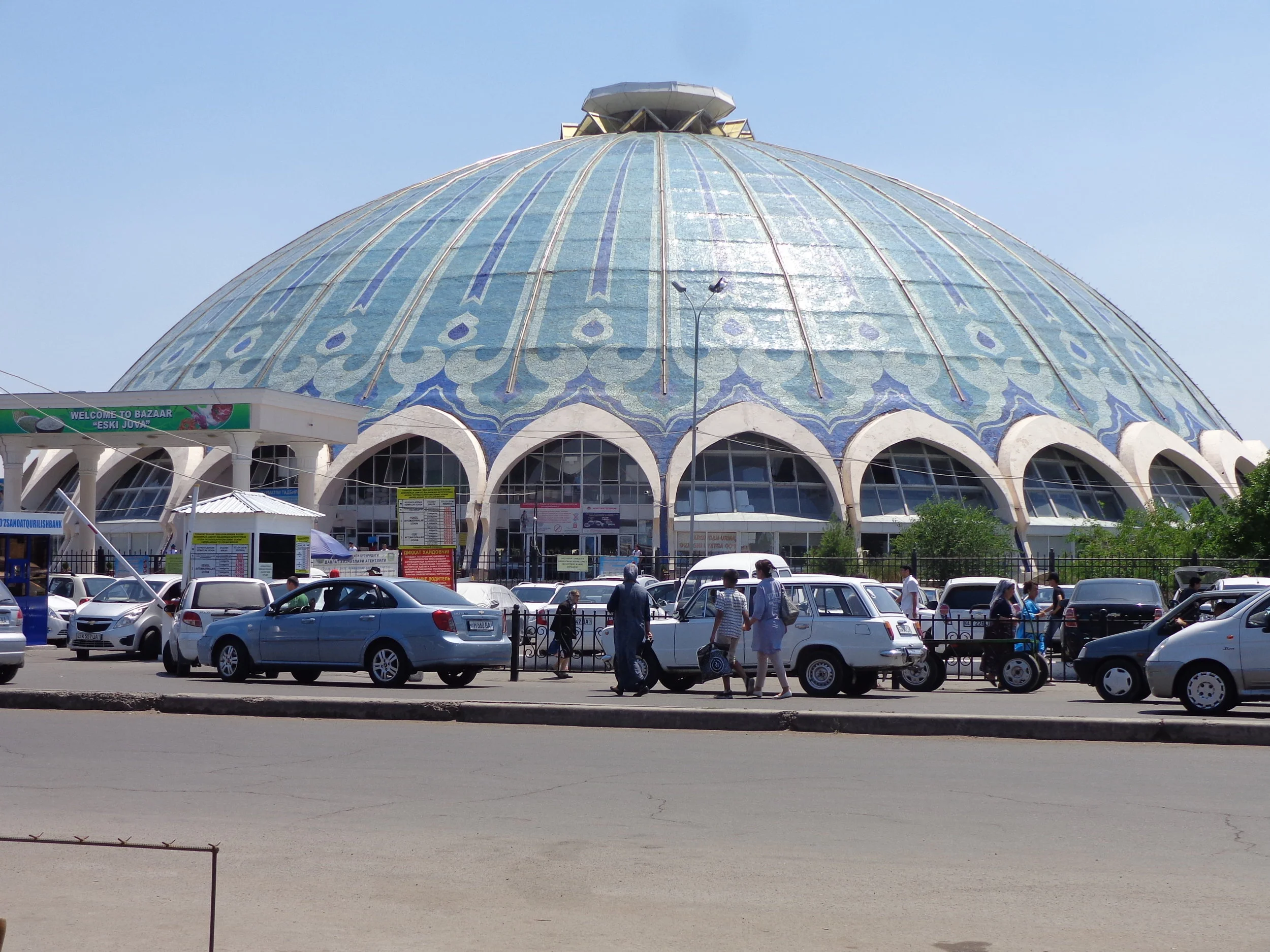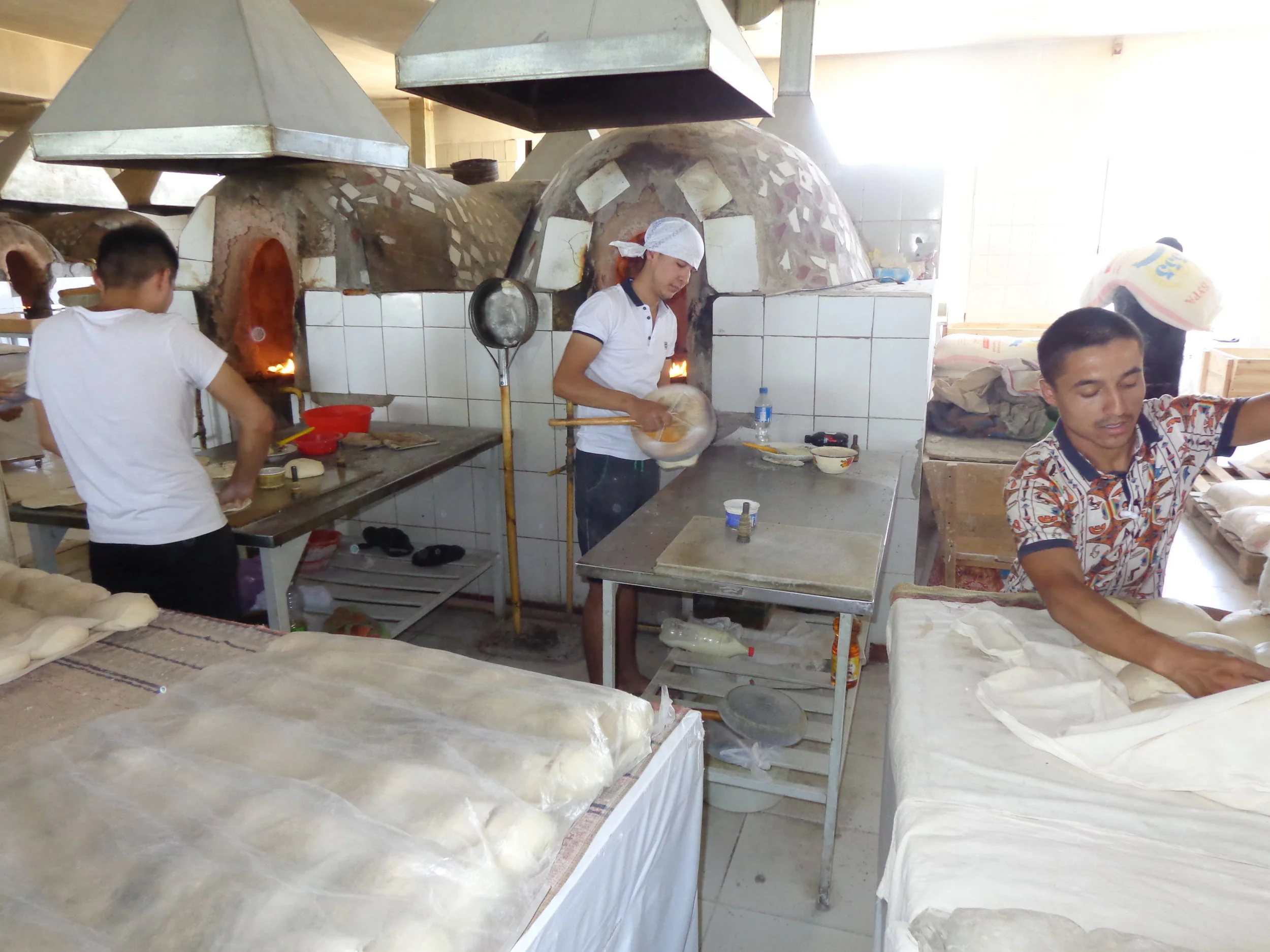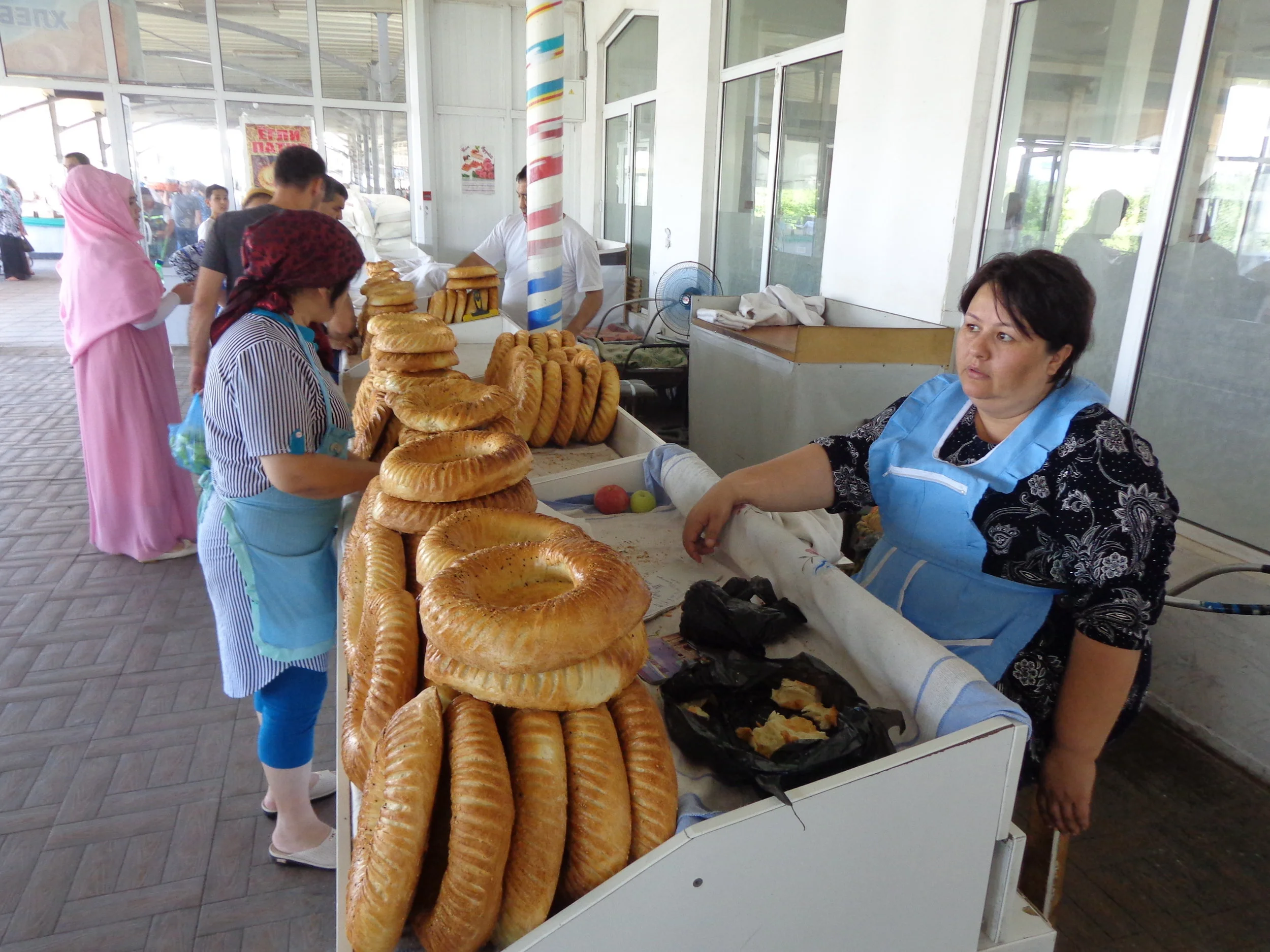Home Visit
This post and the next are from our home visit on our “day in the life day.” We were put to work doing chores. Our chores were not hard but the temperature was about ninety-eight degrees. Altogether, it was a pleasant and easy day for us.
The first photo is of the inner area of their housing compound. There is an outer wall by the road. We entered a room and then came out the back of the room into this courtyard. The family has houses and rooms all around this courtyard. At least three generations live in the houses, so it is really a family compound. The garden is quite sizeable along with the greenhouse and areas for animals. They have all sorts of fruit trees and vegetables, everything from pomegranates to horseradish.
My first job was picking fruit for our lunch drink. My second job was digging potatoes which you can see in the second photo. I dug about twice as much as the red bucket would hold. The potatoes were for lunch.
My third job was cutting alfalfa from the garden to feed their goats. I cut the alfalfa laying on the ground in the third photo. The family guy was cutting it up to make the pieces smaller before feeding the goats.
Vicky is on the samosa-making detail in the fourth photo. I think some of my potatoes ended up in some of the samosas.
Vicky is pounding the bread under the eye of the woman of the house in the last photo. She had to pound and re-pound every square inch of it several times.





